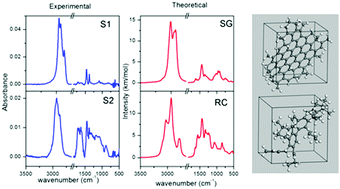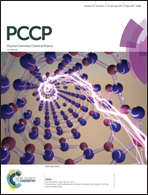Structure and infrared spectra of hydrocarbon interstellar dust analogs
Abstract
A theoretical study of the structure and mid infrared (IR) spectra of interstellar hydrocarbon dust analogs is presented, based on DFT calculations of amorphous solids. The basic molecular structures for these solids are taken from two competing literature models. The first model considers small aromatic units linked by aliphatic chains. The second one assumes a polyaromatic core with hydrogen and methyl substituents at the edges. The calculated spectra are in reasonably good agreement with those of aliphatic-rich and graphitic-rich samples of hydrogenated amorphous carbon (HAC) generated in our laboratory. The theoretical analysis allows the assignment of the main vibrations in the HAC spectra and shows that there is a large degree of mode mixing. The calculated spectra show a marked dependence on the density of the model solids, which evinces the strong influence of the environment on the strengths of the vibrational modes. The present results indicate that the current procedure of estimating the hydrogen and graphitic content of HAC samples through the decomposition of IR features into vibrational modes of individual functional groups is problematic owing to the mentioned mode mixing and to the difficulty of assigning reliable and unique band strengths to the various molecular vibrations. Current band strengths from the literature might overestimate polyaromatic structures. Comparison with astronomical observations suggests that the average structure of carbonaceous dust in the diffuse interstellar medium lies probably in between those of the two models considered, though closer to the more aliphatic structure.


 Please wait while we load your content...
Please wait while we load your content...